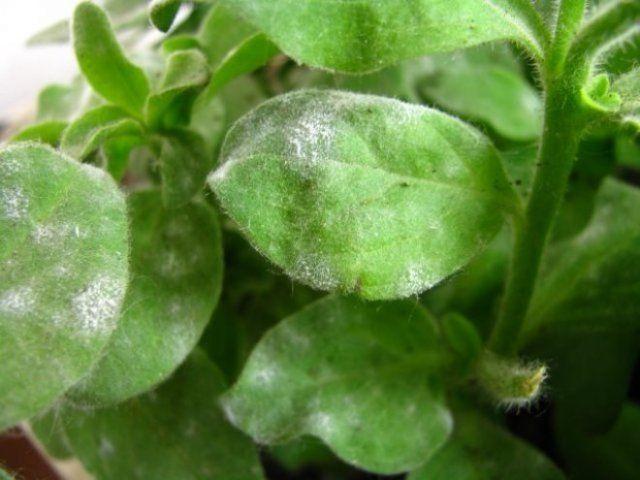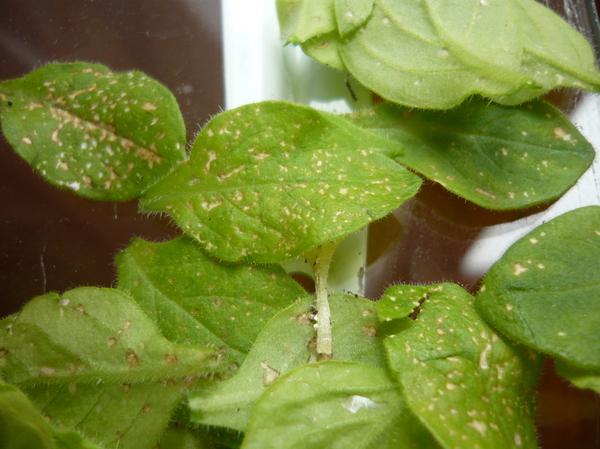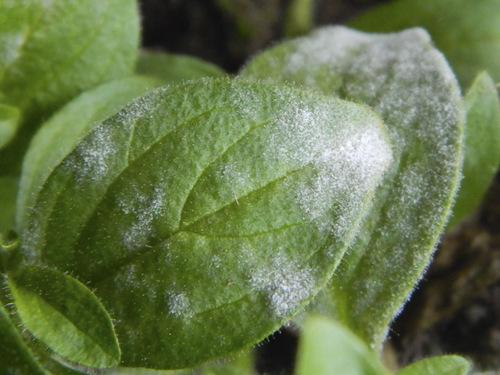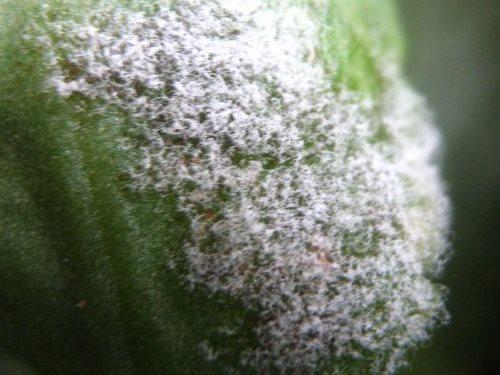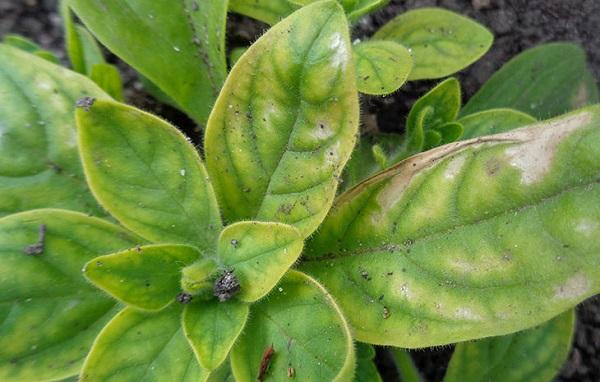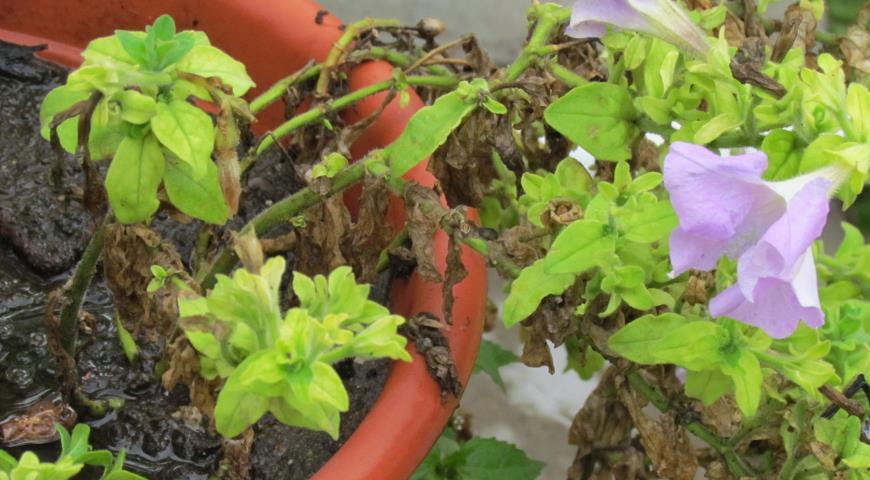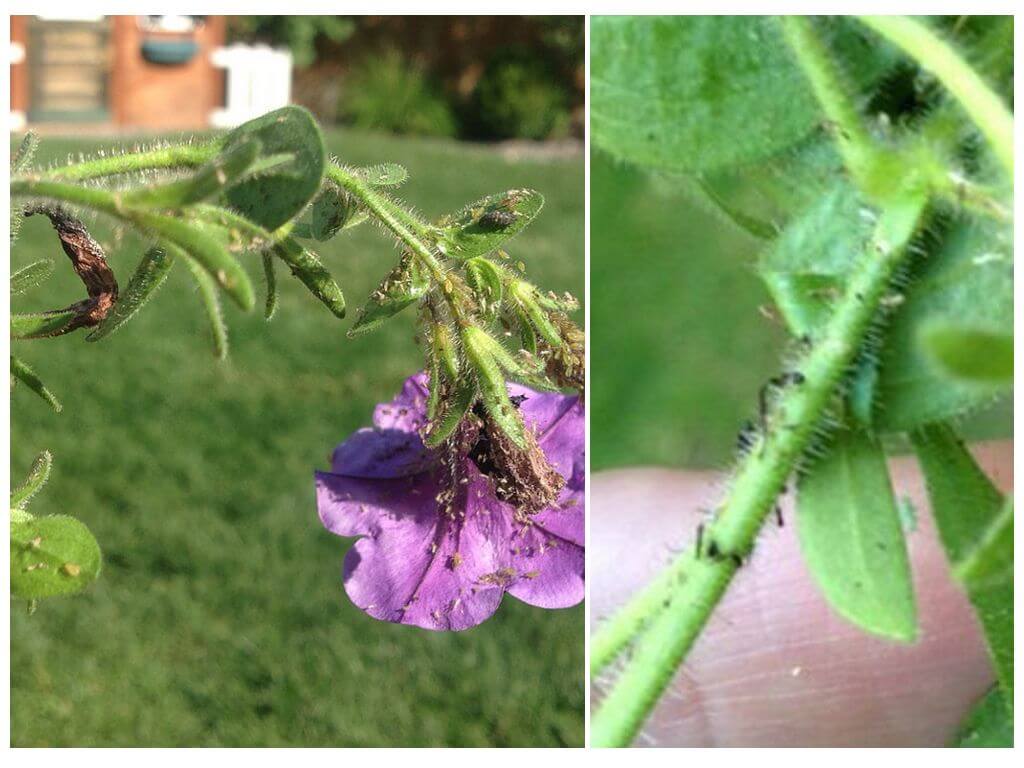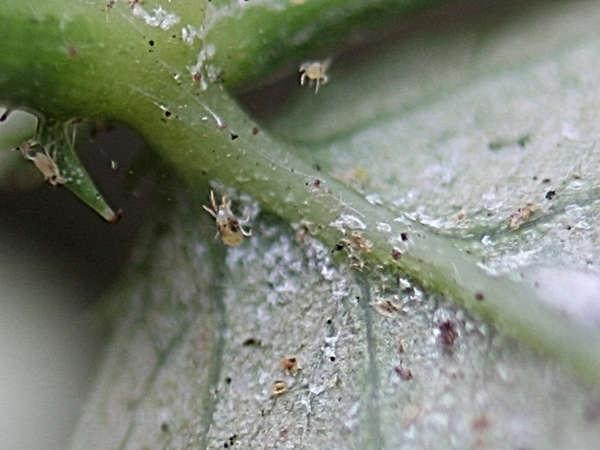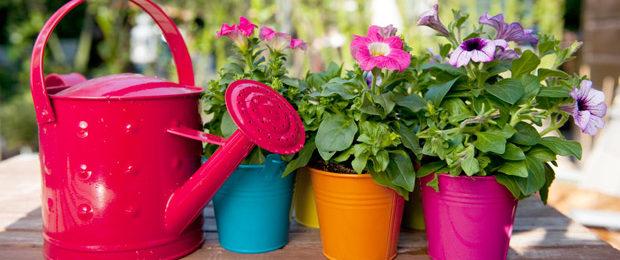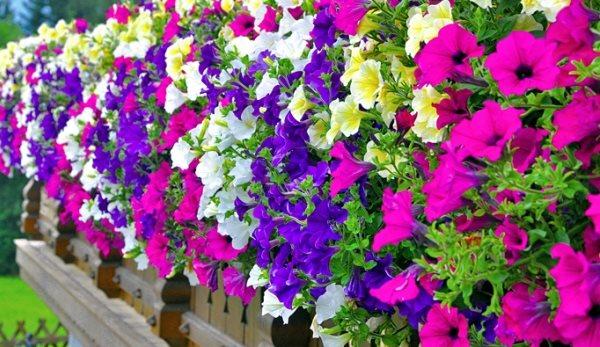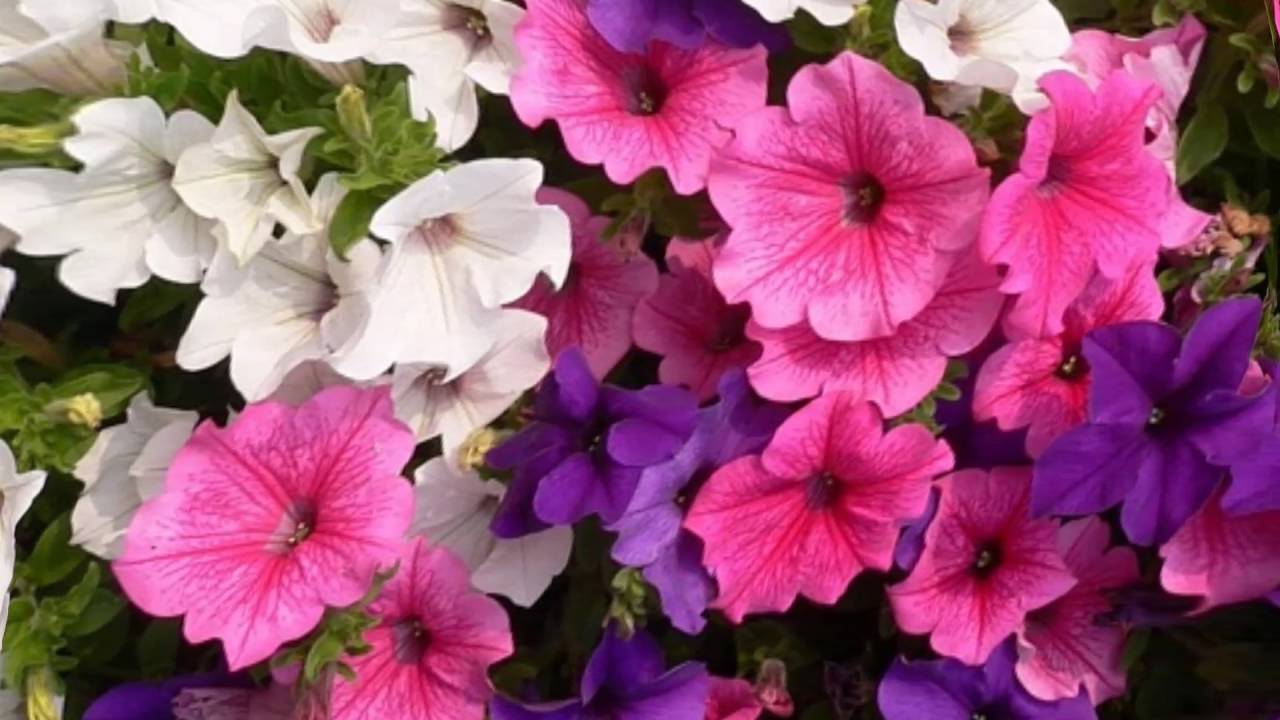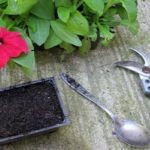In regions where it becomes warm early, petunia seeds are sown directly in the flower bed, but more often the flowers are grown from seedlings. Already at this stage of development, relatives of nightshade crops often develop diseases; petunia attracts harmful insects. The infection is transmitted through seeds contaminated with fungal spores and bacteria. You can cure a plant if you notice the problem in time.
- What diseases is petunia susceptible to?
- Blackleg
- Gray rot
- Brown spot
- Powdery mildew
- Downy mildew
- Chlorosis
- Late blight
- Petunia pests
- Aphid
- Whiteflies
- Spider mite
- Why leaves turn yellow: violations of care rules
- Violation of watering rules
- Temperature violation
- Iron deficiency
- Proper care of petunia
- Treatment of petunia with folk remedies
- Chemical treatment
What diseases is petunia susceptible to?
A herbaceous shrub native to South America, it loves humid and hot weather. When planted in temperate latitudes, the plant becomes susceptible to pathogenic microorganisms that provoke the development of diseases. The leaves of the flower begin to wither and the buds fall off.
Blackleg
The stems of the seedlings soften and darken if the petunia seeds are planted very densely in highly acidic soil. With frequent and abundant watering, pathogenic fungi are activated, and the flower is affected by the black leg. To prevent the onset of disease, thickening should not be allowed. Before sowing the seeds, the soil must be diluted with lime, do not overwater the seedlings, but also ensure that the substrate does not dry out.
Shoots infected with blackleg must be removed from the ground, and healthy petunia should be treated with the fungicides Metaxil, Oxadixil, and Mancozeb.
Gray rot
High soil moisture, the application of large doses of nitrogen fertilizers, and poor lighting contribute to the proliferation of a harmful fungus, which is the causative agent of gray rot.
The disease affects the roots, but then:
- Brown spots appear on the stems.
- The leaves are covered with a fluffy coating.
- The plant dries up.
If signs of rot are detected in time, the petunia is sprayed with the preparations “Skor”, “Maxim”, “Integral”. With proper care, the flower is rarely affected by a fungal infection.
Brown spot
When growing seedlings in a greenhouse, where air humidity is significantly increased, with frequent and abundant irrigation, the water in the soil begins to stagnate. Brown or brown spots form on petunia leaves.The disease is fungal in nature; to treat the plant and destroy the spores, the flower is sprayed with Bordeaux mixture or copper sulfate every 3 days. Treating petunia with ammonia diluted in water helps remove stains.
Powdery mildew
If a decorative flower grows in a flowerbed or balcony, when the temperature drops to 18 °C and rainy weather, the risk of powdery mildew increases. The disease develops with dense planting, excessive or insufficient irrigation and is accompanied by the appearance of whitish spots that quickly enlarge and turn into ulcers. The plaque interferes with photosynthesis, and fungal spores move to other plants. To deal with the sphere library:
- Remove the top layer of soil where petunia grows.
- Pluck off diseased leaves and remove infected shoots.
- Flowers are sprayed with fungicides.
The preparations “Skor”, “Fundazol”, “Vitaros” effectively fight powdery mildew. In the early stages of the onset of the disease, you can use folk recipes. Two tablespoons of soda and soap are poured into 5 liters of water. Petunia is treated with this composition 2 times. Spray flowers:
- potassium permanganate;
- infusion of garlic cloves;
- copper sulfate.
Fungi do not tolerate mustard, pour 1.5–2 liters of powder into a bucket of water and water the roots of the plant, spray the product over the leaves and stems. Treatment of the flower with serum, which must be diluted in a ratio of 1:10 to liquid, helps stop the development of the disease.
Petunia is sprayed with a composition prepared from a glass of milk, 600 g of water and 10 salt. If you don’t know how to deal with spheroteca, you may be left without flowers.
Downy mildew
In warm and damp weather, fungi begin to multiply on petunia, snapdragons, poppy, and verbena, which leads to the appearance of peronosporosis.The leaves of the flowers turn yellow on top and a white coating forms on the inside. The shoots become covered with cracks, the petals turn black, and the plants lose their decorative appearance. The causative agents of downy mildew live for years in the ground and, under favorable conditions, affect both seedlings and flowering plants.
When the leaves become covered with plaque, it is no longer possible to save them, but at the initial stage of the disease, petunia is sprayed with fungicides “Ridomil Gold”, “Fitosporin-M”, “Vectra”, and folk remedies are used. A tablespoon of soda ash and 5 g of soap are mixed with half a bucket of water and the plants are treated every 3 days.
Chlorosis
Petunia does not grow well in depleted soil that does not have enough minerals. For iron deficiency:
- Flowers become covered with spots.
- Leaves curl.
- The shoots dry out.
Chlorosis causes roots to die and the plant to wilt. To cope with the disease, water the flowerbed or pot with water, adding half a teaspoon of citric acid and iron sulfate. The flowers are fed with the drug “Ferovit”, and the buds on the affected plants are torn off.
Late blight
Petunia planted in a flowerbed or in a balcony box reacts negatively to changes in external conditions. With a sharp drop in temperature or prolonged damp weather, flowers are affected by late blight. The disease begins to develop in the lower part of the shoots, then the entire stem rots, and within a few days the petunia dies. It is not possible to save the plant, but treating the soil and flower containers with copper sulfate and fungicides “Ridomil” and “Profit” helps prevent the appearance of late blight.
Petunia pests
The succulent leaves of the ornamental plant attract insects. Parasites enter the flower bed with seedlings and fly from other crops.
Aphid
The microscopic pest attacks different parts of the petunia, covering them with a sticky and sweet coating, which attracts sooty fungus. The leaves on which aphids settle change shape and curl, flowers and buds fall off.
The pest is destroyed by beneficial insects in the form of lacewings and ladybugs. The smell of tobacco repels the parasite. To completely deal with aphids, petunia is sprayed with aqueous solutions of Aktara, Decis, and Confidor.
Whiteflies
The tiny insect lays hundreds of eggs, from which voracious larvae hatch. They drink the juice from the leaves, and the plant turns yellow and withers. Not all insecticides cope with whiteflies; the pest dies after treating petunia three times with Iskra and Aktara, which are produced on the basis of permethrin.
These products must be used carefully, as they also destroy beneficial insects.
Spider mite
Flowering plants suffer from parasites that pierce the leaves with their proboscis to feast on the juice. The presence of a voracious pest is indicated by the appearance of whitish or yellowish dots and the presence of cobwebs on the stem. To cope with tick colonies, the drugs Apollo and Neoron are used. Instead of using chemicals, you can prepare an infusion of a liter of water and 20 g of dandelion or garlic cloves and spray the plant.
Why leaves turn yellow: violations of care rules
Petunia has delicate flowers and looks very attractive. However, sometimes the plant begins to wither.
Violation of watering rules
Petunia leaves change from green to yellow, and the stem softens when affected by rot, which occurs when moisture stagnates. If the plant begins to wilt, you must:
- Cut off dried shoots.
- Spray the flower with fungicide.
- Loosen the soil thoroughly.
You should try to water the plant with warm water, but not abundantly. The soil should not get wet.
Temperature violation
Petunia comes from warm regions, but an adult plant in a flowerbed can easily tolerate cold weather and even slight frosts, but does not tolerate sudden changes in weather or prolonged rains. Flower seedlings develop well at 16–20 °C; at temperatures below 13, the leaves begin to turn yellow and growth stops.
Iron deficiency
Petunia is demanding on soil composition. If there is an insufficient amount of microelements, the flower loses its decorative effect. To compensate for the deficiency of nutrients, fertilizers are added to the soil. With a lack of iron, the leaves of the plant curl, turn yellow, and the decorative appearance and number of buds deteriorate.
Proper care of petunia
The South American guest is an unpretentious plant, but if you do not care for it, diseases develop and pests attack.
Treatment of petunia with folk remedies
When yellow leaves appear, treat the bush with copper sulfate, adding a little crushed soap to the solution. If watering is disrupted, fungi are activated to prevent them from multiplying; petunia is sprayed with potassium permanganate for 5 days. A warm composition prepared from 2 tablespoons of soda, 5 liters of water and soap copes with pathogenic microorganisms. When the leaves wilt, treat the petunia by combining a liter of fermented milk whey with a bucket of liquid.
To prevent powdery mildew, the ornamental plant is sprayed with a spray bottle, filling it with infusion of horsetail. Furacilin helps cure petunia from the disease. To do this, 10 tablets are dissolved in a bucket of water. To spray the flower, use mullein, infusion of garlic and mustard.
Chemical treatment
If the remedies used by the people turn out to be ineffective, the plant continues to hurt, the leaves dry out and the buds fall off, you need to get rid of the affected shoots and spray the flower with fungicides:
- "Amistar extra";
- "Fundazol";
- "Bogatyr";
- "Acrobat";
- "Topaz".
When purchasing a drug, you need to carefully read the instructions; not every drug cures all diseases.
When whiteflies, aphids, and thrips appear, biological preparations “Actofit”, “Fitoverm”, systemic insecticides “Intavir”, “Desis-Profi”, “Calypso”, acaricides “Aktellik”, “Nurell” are used.

